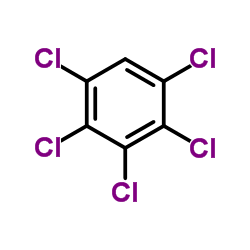Characterization of multiple novel aerobic polychlorinated biphenyl (PCB)-utilizing bacterial strains indigenous to contaminated tropical African soils.
Sunday A Adebusoye, Flynn W Picardal, Matthew O Ilori, Olukayode O Amund, Clay Fuqua
Index: Biodegradation 19(1) , 145-59, (2008)
Full Text: HTML
Abstract
Contaminated sites in Lagos, Nigeria were screened for the presence of chlorobiphenyl-degrading bacteria. The technique of continual enrichment on Askarel fluid yielded bacterial isolates able to utilize dichlorobiphenyls (diCBs) as growth substrates and six were selected for further studies. Phenotypic typing and 16S rDNA analysis classified these organisms as species of Enterobacter, Ralstonia and Pseudomonas. All the strains readily utilized a broad spectrum of xenobiotics as sole sources of carbon and energy. Growth was observed on all monochlorobiphenyls (CBs), 2,2'-, 2,3-, 2,4'-, 3,3'- and 3,5-diCB as well as di- and trichlorobenzenes Growth was also sustainable on Askarel electrical transformer fluid and Aroclor 1221. Time-course studies using 100 ppm of 2-, 3- or 4-CB resulted in rapid exponential increases in cell numbers and CB transformation to respective chlorobenzoates (CBAs) within 70 h. Significant amounts of chloride were recovered in culture media of cells incubated with 2-CB and 3-CB, suggesting susceptibilities of both 2- and 3-chlorophenyl rings to attack, while the 4-CB was stoichiometrically transformed to 4-CBA. Extensive degradation of most of the congeners in Aroclor 1221 was observed when isolates were cultivated with the mixture as a sole carbon source. Aroclor 1221 was depleted by a minimum of 51% and maximum of 71%. Substantial amounts of chloride eliminated from the mixture ranged between 15 and 43%. These results suggest that some contaminated soils in the tropics may contain exotic micro-organisms whose abilities and potentials are previously unknown. An understanding of these novel strains therefore, may help answer questions about the microbial degradation of polychlorinated biphenyls (PCBs) in natural systems and enhance the potential use of bioremediation as an effective tool for cleanup of PCB-contaminated soils.
Related Compounds
| Structure | Name/CAS No. | Molecular Formula | Articles |
|---|---|---|---|
 |
arochlor 1221
CAS:11104-28-2 |
C6HCl5 |
|
Effects of neonatal polychlorinated biphenyl exposure on fem...
2001-10-01 [Physiol. Behav. 74(3) , 363-70, (2001)] |
|
Differential effects of aroclors and DDT on growth factor ge...
1997-01-01 [Adv. Exp. Med. Biol. 407 , 295-302, (1997)] |
|
Biodegradation of Aroclor 1221 type PCBs in sewage wastewate...
1981-11-01 [Bull. Environ. Contam. Toxicol. 27(5) , 695-703, (1981)] |
|
Isolation and characterization of a biphenyl-utilizing psych...
2006-01-01 [J. Basic Microbiol. 46(2) , 94-107, (2006)] |
|
Endocrine disruptive effects of polychlorinated biphenyls on...
2005-08-01 [Tohoku J. Exp. Med. 206(4) , 327-32, (2005)] |